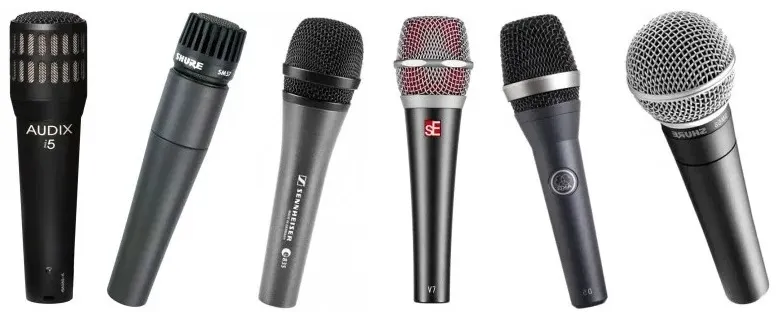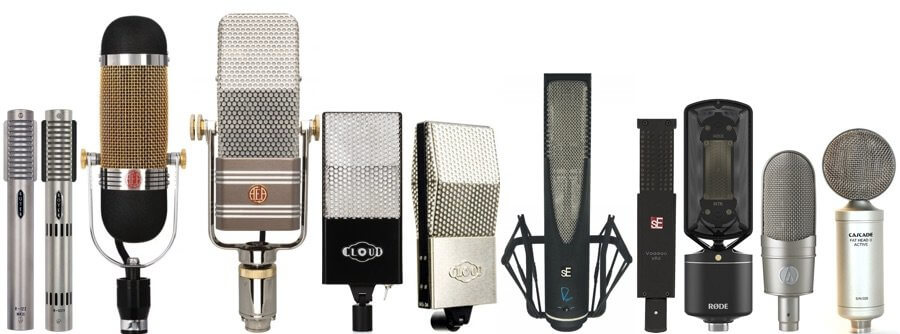Audio quality is crucial to production value whether you’re making a short video or singing in church choir, concert, or launching a new podcast/TikTok video. You could desire to advance your idea even though many producers produce excellent material solely using smartphones. Finding the right microphone for you can be difficult, but luckily this post provides all the info needed to make you have the technical know how on getting the right mic.

It can be challenging to distinguish the useful terminology from the fluff in the technical language used in the audio industry. Before you begin purchasing, there are a few things you should know about microphones, regardless of your project—whether it’s creating a YouTube channel, updating your podcast setup, or tracking a singer.
What are the different kinds of microphones?
Once you are aware of what you are seeking to record, it is time to choose the appropriate tool. Not all microphones are created alike; some are more effective in particular situations than others. Dynamic and condenser microphones are the two basic varieties.
1. What is a dynamic microphone?
It’s most likely a dynamic microphone if you image the mic a performer like a singer or perhaps your favorite comedian uses on stage. These microphones perform admirably in loud settings. These can be used to record a stage artist, a street interview subject, or even a guitar or drum kick.
Get TikTok SEO Cheat here

Dynamic microphone operation is rather straightforward: A thin wire coil enclosed in a magnetic field is connected to a diaphragm that reacts to sound vibrations. The coil transforms the movement of the diaphragm caused by sound waves into an electrical signal that may be recorded.
Because the magnets and coil inside dynamic microphones are rather sturdy and can withstand a beating without breaking, they work well in most recording conditions. The Shure SM58 is the most frequently suggested microphone since it is a reliable choice whether you are recording on site or at your desk.
The Telefunken M80 Dynamic microphone is another excellent option if you like the notion of a dynamic mic but want something a little higher up on the spectrum. Our Editor at Large, Chris Thomas, uses it exclusively.
Read also:
How to Start Indomie noodles & Egg Cooking Business in Nigeria 2023
Australia Visa Requirements for Nigerian Citizens (African citizens)
2. What’s a condenser microphone?
Condenser microphones, which are also widely used, operate differently by employing capacitor plates rather than a coil and magnets. The practical fact that you need to be aware of is that condenser mics can be far more sensitive to minor vibrations than dynamic mics. It’s easy to fall further down the technological rabbit hole. Condensers should not be used with bass drums, while dynamic microphones can. If you want to hear the intricacies in a voice, you should use these.

The Rode NT1-A condenser mic, which does a decent job with nearly anything, is my personal pick if you’re looking for a reliable all-purpose mic to use at home for vocals or string instruments.
3. What is a ribbon microphone?
Ribbon mics operate on a somewhat different concept and are significantly less frequent. In essence, a conductive ribbon that responds to your sound source lays between two electromagnetic poles. Technically speaking, these microphones belong to the dynamic mic family. Consider vintage crooners performing in a studio with a ribbon mike in the front.

Modern ribbon microphones are built more robustly than older models, frequently employing stronger nanomaterials. In general, you should still stay away from putting a ribbon mic in front of a guitar amp unless the manufacturer has given their approval, such as the Pinnacle FAT Top, whose mics are made with amps in mind. This is due to the ribbon structure’s delicate mechanical design. These microphones typically contain a bidirectional polar pattern, which is useful for concurrently recording two sources on either side of the mic, such as two speakers.
Ribbon microphones are excellent for vocal applications as well and were widely employed in the early days of broadcasting. Try using a ribbon microphone if you want a different tone.
Which microphone—a USB or an XLR—should you purchase?
In addition to being practical and simple to use, USB mics are frequently more affordable than XLR microphones. Podcasting and voiceovers benefit greatly from the use of USB microphones.

However, if you want a higher quality sound for your podcast or if you want to record vocal or instrumental music, use an XLR mic. XLR microphones can be expensive and demand the purchase of an audio interface, but they often output audio of greater quality than USB microphones.
This is because, in addition to the microphone capsule itself, USB microphones contain an integrated analog to digital convertor (ADC), which may not be configured optimally for the sound volume you’re putting into it. Additionally, the entire device is typically made to meet a more affordable price point. In contrast, XLR microphones lack the ADC and have an analog output stage that is normally balanced on pins 2 and 3 of the XLR connector to filter out noise introduced by the wire that connects them to the recording apparatus.
How to Choose the Right Microphone
1. Evaluate usability
The best microphone is the one with the fewest technical issues that you can use. If all else is equal, opt for the simplest setup you can manage so you can start recording as soon as possible, hence the term “plug and play.”
2. Recognize the frequency response of a microphone
Some microphones, like the conventional radio microphone RE20, have a big diaphragm and are meant to take up lower frequencies, such a bass drum or even a bass guitar.
The small diaphragm or small capsule microphone is made to take up higher frequencies, like the female voice, the radiance of an acoustic guitar, or shimmering cymbals. These could be the microphones that hang above an orchestra or a drum set.
3. Check the Directionality of the Vocal Mic.
Choose the directional pattern, sometimes referred to as the polar pattern of a microphone, that best meets your requirements. A more concentrated directional microphone is probably preferable for voice overs. You should be searching for a cardioid or hypercardioid polar pattern.
As it is made to take up sounds that are close to the microphone’s front, this kind of polar pattern will reduce room tone and background noise.
4. Select the Pop Filter
For voice over actors, a pop filter is regarded as a common piece of equipment. The pop filter functions as a screen to help minimize sibilance, plosives, and other mouth noises by reducing the impact of the air from your lips onto the microphone capsule.
5. Remember to bring a shock mount
A mechanical fastener called a shock mount suspends your microphone by elastics while holding it in place. I have a USB microphone that is used at work to record podcasts. The microphone is insulated from stand vibrations, which is one advantage of a shock mount. The shock mount, for instance, may withstand a low rumble underfoot.
6. It’s Important to Test a Microphone with Your Voice
Try out different mics by using a friend’s, or take out a few from the music store. Before spending several thousand dollars on the ideal microphone for your voice, you can think about renting a few mics for a couple hundred dollars overnight to test out a few pieces of gear.
7. When it comes to microphone prices, more expensive isn’t always better
The most costly microphone on the market won’t always be the best one for your voice. Many of these requirements could be viewed as “nice to haves,” rather than “need to haves,” because from one point of view, the best microphone is the one that is reasonably priced and effective.
Having said that, the microphone and pre amp are the technological components that stand between you and your computer, so choose one that not only enhances the quality of your voice but also falls within your price range.
Conclusion
Microphones aren’t attractive. The majority of us don’t experience the same adrenaline when purchasing a mic as we do when purchasing a new camera or lens, but it is something that may elevate your movie to a new level and is crucial. It is frequently the first factor that distinguishes a video’s quality, as was said above.
The environment and desired style will strongly influence the sort of microphone you use. Are you seeking for a live show, a video podcast solution, or a church? Select the devices that will offer you the best chance of achieving the desired sound. Although not advised for the best quality or most professional surroundings, choosing a microphone that excels at recording in a variety of environments, like the Rode, can help you record complete sets with a single mic and is still far superior to built-in mics. Always keep in mind that your audience will take your video seriously if you treat its audio seriously.